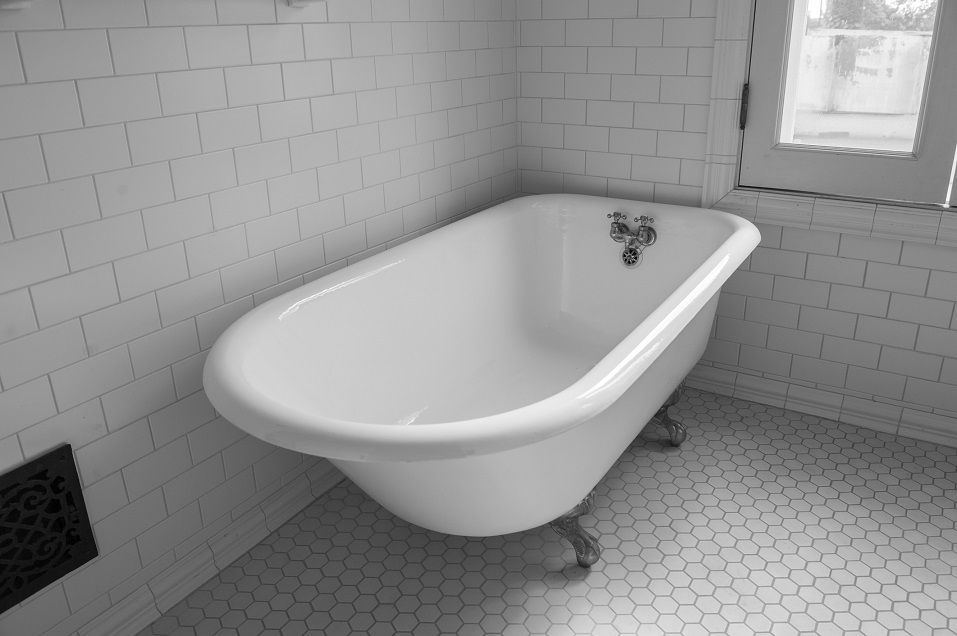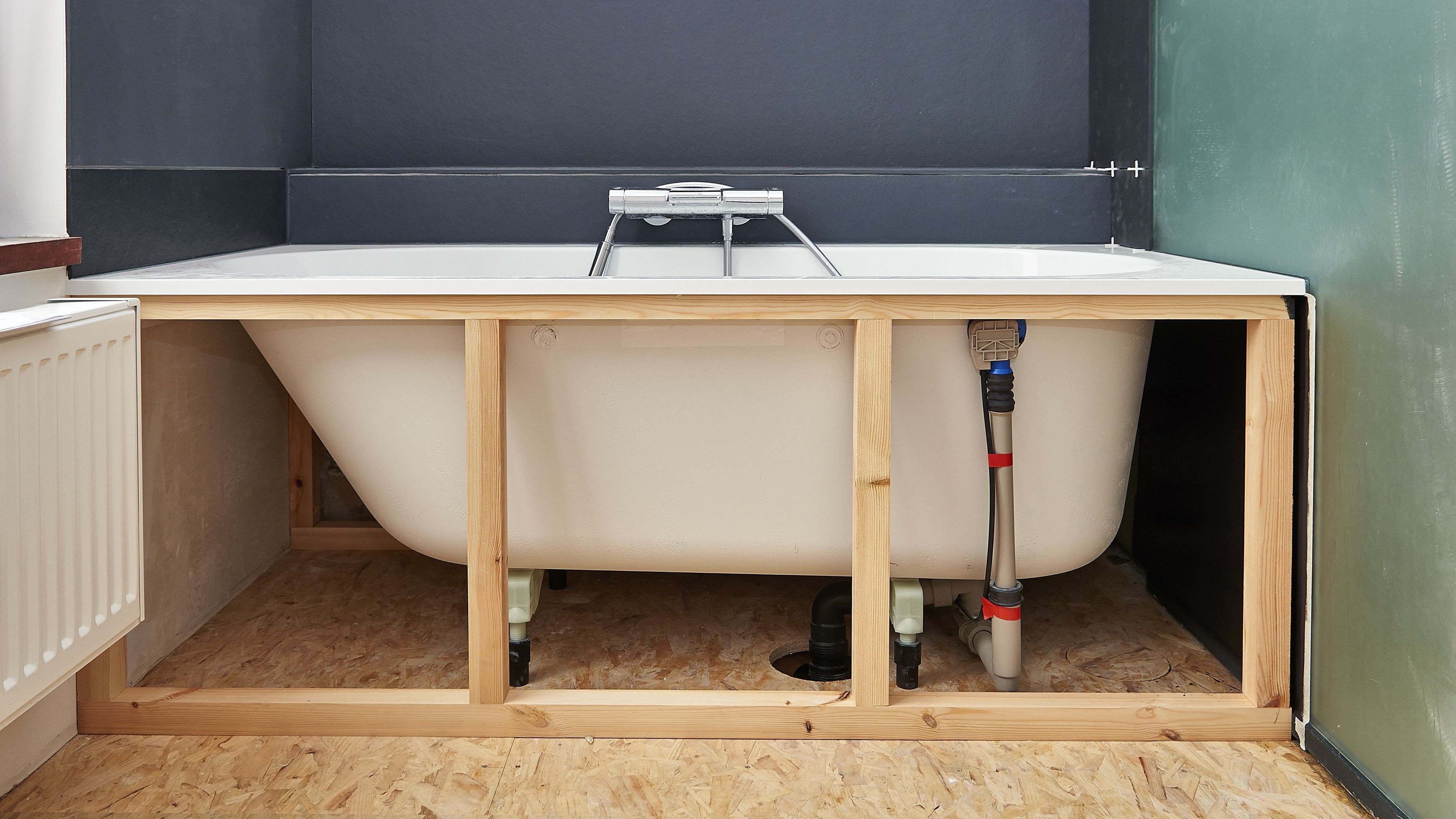The content which follows on the subject of A Step-by-Step Guide to Installing a Bathtub is totally remarkable. You should investigate for yourself.

Setting up a bath tub isn't precisely rocket science, but it does require solid plumbing, woodworking, as well as occasionally, tiling skills. Changing an old bathtub with a new one is likewise a reasonably hard job. If the old bathtub is easily available, the project can relocate speedily; if you need to open a wall surface to eliminate the old tub and also position the new bathtub, the task is much harder. In either instance, the task is within a house handyman's abilities, although you will require an assistant to leave the old bathtub and embeded in the brand-new one. Ensure you have actually qualified yourself for the task and also fit attempting it. Rather than working with a specialist to take control of a halfway-completed job, it is far better to take into consideration using one prior to you begin. Opportunities are you might need an expert plumber to make tube links.
This write-up will certainly assist you install a brand-new bathtub in your bathroom if you have currently acquired a brand-new bathtub as well as don't require to alter the setup of your previous supply of water pipes.
Your devices as well as material list must make up the following:
Getting ready for the Installation
To start with, the supporting framework provided with the bathroom ought to be fitted (if called for) according to the manufacturer's directions. Next off, fit the faucets or mixer to the bathtub. When fitting the faucet block, it is very important to see to it that if the faucet includes a plastic washer, it is fitted between the bathroom and the taps. On a plastic bathroom, it is additionally sensible to fit a supporting plate under the faucets device to prevent pressure on the tub.
Fit the flexible faucet connectors to the bottom of the two faucets utilizing 2 nuts as well as olives (occasionally provided with the bathtub). Fit the plug-hole electrical outlet by smearing mastic filler round the sink outlet hole, and then pass the outlet with the hole in the bathroom. Make use of the nut provided by the producer to fit the plug-hole. Take a look at the plug-hole outlet for an inlet on the side for the overflow pipe.
Next, fit the end of the flexible overflow pipeline to the overflow outlet. After that, screw the pipe to the overflow face which must be fitted inside the bath. Ensure you use every one of the provided washers.
Attach the trap to the bottom of the waste outlet on the tub by winding the thread of the waste outlet with silicone mastic or PTFE tape, and also screw on the trap to the outlet. Link the bottom of the overflow tube in a similar manner.The bath should currently prepare to be suited its final setting.
Removing Old Taps
If you require to change old taps with brand-new ones as a part of your installation, then the first thing you should do is detach the supply of water. After doing so, switch on the faucets to drain any kind of water remaining in the system. The process of removing the existing faucets can be fairly bothersome because of the restricted access that is typically the situation.
Utilize a basin wrench (crowsfoot spanner) or a tap device to reverse the nut that links the supply pipes to the taps. Have a cloth all set for the continuing to be water that will certainly come from the pipes. Once the supply pipes have been removed, make use of the very same tool to loosen up the nut that holds the taps onto the bath/basin. You will require to quit the single taps from transforming throughout this process. Once the faucets have actually been eliminated, the holes in the bath/basin will need to be cleaned up of any old sealing substance.
Before proceeding to fit the brand-new taps, contrast the pipeline connections on the old faucets to the brand-new faucets. If the old taps are longer than the new taps, then a shank adapter is needed for the new faucets to fit.
Setting up the Bathtub
Making use of both wooden boards under its feet, position the tub in the needed placement. The wood boards are valuable in equally spreading out the weight of the bathtub over the area of the boards as opposed to concentrating all the weight onto four tiny factors.
The following objective is to ensure that the tub is leveled all round. This can be achieved by inspecting the spirit level and also readjusting the feet on the tub up until the spirit level reviews level.
To install faucets, fit the bottom of the outermost adaptable tap port to the appropriate supply pipeline by making a compression sign up with; then do the same for the various other faucet.
Activate the water as well as examine all joints and brand-new pipework for leaks and also tighten them if essential. Load the bath tub and also examine the overflow outlet and also the normal outlet for leaks.
Finally, deal with the bath paneling as explained in the supplier's user's manual. Tiling and securing around the tub should wait up until the bath tub has been utilized at the very least once as this will certainly settle it into its last position.
Fitting New Touches
If the tails of the new faucets are plastic, then you will require a plastic port to stop damage to the string. One end of the adapter fits on the plastic tail of the faucet and the other end supplies a link to the existent supply pipelines.
If you require to fit a monobloc, after that you will need lowering couplers, which connects the 10mm pipe of the monobloc to the typical 15mm supply pipe.
Next, position the faucet in the placing hole in the bath/basin guaranteeing that the washers are in area between the tap as well as the sink. Safeguard the faucet in position with the supplier provided backnut. Once the tap is safely in position, the supply pipelines can be attached to the tails of the taps. The taps can either be linked by using corrugated copper piping or with typical faucet connectors. The former type ought to be linked to the faucet finishes initially, tightening up just by hand. The supply pipelines can later on be attached to the various other end. Tighten both ends with a spanner after both ends have actually been linked.
Tiling Around the Bathtub
In the area where the bathroom fulfills the tile, it is needed to secure the joins with a silicone rubber caulking. This is essential as the fitting can relocate sufficient to break a stiff seal, causing the water to penetrate the wall between the bath and the tiling, resulting in difficulties with moisture and possible leaks to the ceiling listed below.
You can choose from a selection of coloured sealants to blend in your components and also installations. They are sold in tubes and cartridges, as well as are capable of securing gaps approximately a width of 3mm (1/8 inch). If you have a bigger void to fill, you can fill it with spins of drenched newspaper or soft rope. Remember to always load the bath tub with water prior to securing, to enable the motion experienced when the tub is in usage. The sealant can break fairly early if you do not take into account this movement prior to securing.
Additionally, ceramic coving or quadrant floor tiles can be made use of to border the bath or shower tray. Plastic strips of coving, which are easy to use and reduce to dimension, are additionally easily available on the marketplace. It is a good idea to fit the tiles making use of water-resistant or waterproof glue and grout.
Bathtub Installation
How Important Is A Bathtub To Your Home?
High-quality baths, showers, and other bathroom updates are necessary when considering a smart investment in your home. It’s a room that you go to every day and one that is constantly being used by guests.The bathroom is one of the top trafficked rooms in a home and also one of the most valuable in terms of home resale.
Install Piping Before Tub
You will be using your existing drain and waste vent system, but pipes required include the hot and cold water supply lines and a pipe leading to a shower head. A mixing valve and shower head are also needed. Air chambers may be required.
Position the Tub
Lower the tub into place so that the continuous flange fits against the wall studs and rests on 1’x4' or 2’x4' supports. Anchor the tub to the enclosure with nails or screws inserted through the flanges into the studs.
NOTE: Remember, bathtubs and shower stalls may require support framing. A bathtub filled with water is extremely heavy, so check building codes and framing support before installing the tub.
Assemble Drain Connections
Assemble the bathtub drain connections by connecting the tub overflow with the tub drain above the trap, not beyond it. The trap will have a compression fitting that screws over the arm of the overflow assembly.
Place a Pipe For the Shower Head
First, locate a brass female threaded winged fitting and attach it to a framing support via a screw or a nail. Then run a pipe up the wall for the shower head. Sweat or solder the other side of the brass fitting to the top of the pipe.
Attaching Hot and Cold Water Lines
Attach your water lines for both hot and cold by sweating these directly into the hot and cold ports of the mixing valve. The mixing valve will be how water enters the tub’s system, not by the pipes themselves.
Install the Spout
Extend a piece of 1/2 inch pipe, or whichever length is specified in the manufacturer’s instructions, for the tub spout. Sweat on a male threaded fitting at the end of the pipe or use a brass nipple of the proper length and a 1/2 inch cap.
NOTE: At this point you should have your rough-in plumbing work inspected before proceeding further.
Check For Leaks
Restore the water pressure and check the drain connection and the supply pipes for any sign of leaking.
estore the Bathroom Wall
Replace the wall with moisture-resistant drywall as a base for your wall covering. Seal the joints between the wall and your new tub with silicone caulk as protection against water seepage.
https://www.berkeys.com/2016/12/02/bathtub-installation-dallas/

As a keen reader on How to Install a Bathtub, I think sharing that information was worth the trouble. Those who appreciated our blog post kindly remember to share it. Thanks for your time. Visit again soon.
Contact Us Now